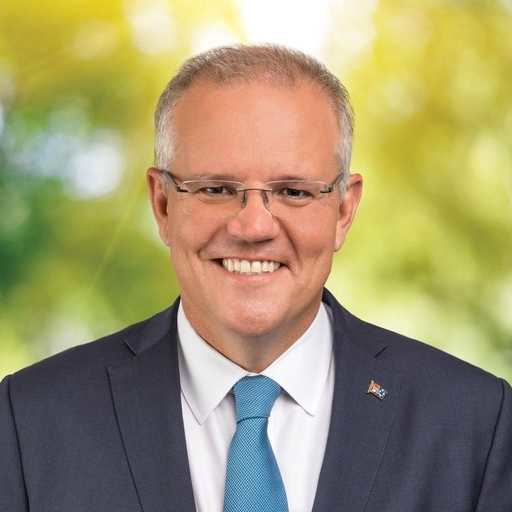
The Catholic Church is one of the oldest institutions in the world, and it has long held to the values and doctrines of Christianity. For centuries it has survived because its leaders managed to ensure its safety from those who would seek to destroy it. This is the challenge that faces all religions.
But now, those very same leaders who are supposed to protect the Church and its doctrine are giving in to the political agendas of certain ideologues.
Two weeks ago, the Plenary Council met in Sydney for the second time. For those who are unaware, a Plenary Council is a gathering of the whole Church. They assemble to consider directions that the Church should be going in. It is an event that comprises of bishops, nuns, brothers, laity, and others within the Church.
This council votes on motions brought forth regarding various directions and issues that these individuals in the Church want to see addressed, and the solutions they produce. In order for a decision on an issue to be made, the motion must be supported by the bishops and the remainder of the Plenary.
In the previous meeting of the Plenary Council late last year, it was becoming apparent that a shift of ideology was in the air.
The main issues being discussed revolved around Indigenous representation and inclusion in the Church and the liturgy. Once the first meeting had concluded and a second was announced, it was obvious the second round was likely to descend into a political activist conference .
What took place at the second meeting of the Plenary Council involved significant deviations from doctrine and something I sincerely hope and pray does not take hold across the entire Catholic Church.
Instead of listening to the Holy Spirit, as they had been called to do, and focusing on guiding the Church in a direction that was right with God – most of those on the council appeared to be using the meeting as an opportunity to push their own politically correct agendas.
The week began with an opening mass that consisted of an Indigenous smoking ceremony featuring a didgeridoo, followed by an acknowledgment of country and a request of the ‘ancestral spirits’ to allow the mass to take place. Then an Indigenous woman, who opened the proceedings, insisted everyone in attendance ensure that, in their deliberations, they consider the Indigenous people and their inclusion in the Church.
This focus on dividing the Church into an acknowledgment of race goes against the primary teaching of equality in the eyes of God.
Then things got extremely political as if the building of the Church was being ripped apart at its foundations.
On the first day of deliberations, a motion divided into three parts was passed regarding Indigenous inclusion. The first went to apologising to the Indigenous community and then involved an endorsement of the Uluru Statement.
The next part of the motion stated the following:
That each Catholic school, parish, diocese, eparchy or organisation respond to the recommendations contained in the NATSICC position paper “Embracing Aboriginal and Torres Strait Islanders in the Life of the Catholic Church” in at least the following ways:
a. acknowledging in a prominent and appropriate manner the Traditional Custodians of the land upon which their buildings stand;
b. including the online Cultural Competency in a Catholic Context course developed by NATSICC and approved by the Bishops Commission for Relations with Aboriginal and Torres Strait Islander Peoples in the orientation and/or ongoing formation of staff and volunteers to enable more effective and appropriate ministry;
c. ensuring that any retreats and other formation activities offered are culturally appropriate;
d. working actively to include Aboriginal and Torres Strait Islander people on its committees, boards and decision-making bodies.
Part (a) of this section essentially demands that each one of the entities specified above would be required to incorporate an acknowledgment of country. It is pure insanity, particularly in the Catholic Church, given Catholics should believe the traditional owner of this land is God.
Part (d) will likely pave the way for Indigenous quotas on committees, boards, and bodies within the Catholic Church, Catholic schools, and other Catholic organisations which are meant to be based on merit – not race.
The third and final section of this particular motion read:
That the advisory councils of the Bishops Commission for Liturgy, in partnership with NATSICC, develop options for the liturgically and culturally appropriate use of Aboriginal and Torres Strait Islander symbols and rituals in Catholic liturgical contexts, with respect for the diversity of Aboriginal and Torres Strait Islander cultures.
The Plenary Council, which is supposed to have the interests of the Catholic faith at heart, voted in favour – and overwhelmingly so – to incorporate Aboriginal and Torres Strait Islander rituals and symbols into the Catholic Church and the liturgy.
Catholics may see this as the implementation of paganism in the Church.
The bishops voted 43-2 in favour. Only two bishops had the courage to stand up for their Church and their faith.
The following day, the meeting caused a flurry over ‘gender equality.’ Enter motions 4.5 and 4.6:
4.5 This Plenary Council commits the Church in Australia to act in a way that witnesses clearly to the equal dignity of women and men, with their diverse gifts and experiences, overcoming the assumptions that lead to inequality, and to “enhancing the role of women in the Church”. This will involve:
a. ensuring that women are appropriately represented in decision-making structures of Church governance at the parish, diocese or eparchy, and national level, and in Church agencies and organisations;
b. ensuring, through formal policies and intentional practice, that the experiences and perspectives of women are heard, considered and valued. This is particularly important for matters which affect them distinctively;
c. ensuring that dioceses and eparchies value more publicly, recognise and, where necessary, remunerate more appropriately those women already leading and serving in the Church in various ways;
d. Reviewing actions taken to address the findings of the research report Woman and Man: One in Christ Jesus (1999) and identifying where further action is appropriate to progress the commitments made in the Australian Catholic Bishops Conference Social Justice Statement, Woman and Man: The Bishops Respond (2000);
e. women engaged in ministry sharing with the Australian bishops their experiences and reflections on ministry, and reporting to Pope Francis’ reconstituted Study Commission on the Female Diaconate;
f. considering women for ministry as deacon – should Pope Francis authorise such ministry in light of the findings of the reconstituted Study Commission on the Female Diaconate; and
g. presenting scriptural and theological formation and catechesis on the dignity of women at the parish, diocesan, and national level.
4.6 That each Australian diocese and eparchy foster new opportunities for women to participate in ministries and roles that are stable, publicly recognised, resourced with appropriate formation including theological education and commissioned by the bishop. These ministries and roles should engage with the most important aspects of diocesan and parish life and have a real impact on those communities.
Both motions failed to pass, the bishops turning them down. This resulted in the meeting coming to a grinding halt.
A number of women began to cluster together at the edge of the room, some reportedly with tears in their eyes. Following the break, the council returned only for a public shaming to take place where social justice warriors within the Church took turns trying to talk-around the bishops who voted against the motions. They were most upset that the bishops had said no to women becoming Deacons (which is in line with Church doctrine).
The courage of the bishops to uphold traditional doctrine was short-lived. The bishops agreed to come back to this motion, which was then redrafted and approved in its new form. In typical fashion, the bishops caved.
This is the problem the Catholic Church finds itself facing.
Its leaders lack the courage to stand up to radical ideologues who have infiltrated the Church to re-write its traditional doctrine from the inside out. It does not help that the man who is supposed to be protecting the Catholic Church is an Agenda Contributor for the World Economic Forum.
There are many within the Catholic Church, including its leaders, who are attempting to drive it away from tradition towards new age thinking. In one of the final motions presented to the council, which was passed, a new translation of the Missal was requested which was ‘sensitive to the call for language that communicates clearly and includes all in the assembly’.
Wherever you see a call for inclusive language, you know it’s code for political correctness.
Put simply, if leaders of the Church do not have the courage to stand up the inclusion of secular political beliefs and those of a different religion into Church doctrine, then the Catholic Church is about to face some of its greatest tribulations.
A Woke church is a weak church. It should not be governed by ideological bureaucrats, but by God.
Former prime minister Scott Morrison may retire from parliament by the end of the year with hopes of potentially taking up a key international consulting post.......He was a nothing P.M....WEAK & FECKLESS...and now RUNNING AWAY from the Country he helped destroyed, JUSTICE needs to be served and SCOMO needs to be around to answer for his COWARDICE.













